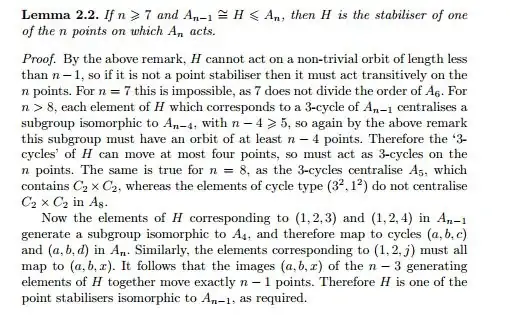I was trying to read the following lemma which admit as an easy corollary the structure of the automorphism group of the alternating group on $n\geq 7$ elements.

Anyway there are two points that are really unclear to me.
First when it says
Therefore the `$3$-cycles' of $H$ can move at most four points.
Secondly when it says
Now the elements of $H$ corresponding to $(123)$ and $(124)$ in $A_{n-1}$ generate a subgroup isomorphic to $A_4$ (this is clear), and therefore map to cycles $(abc)$ (this is unclear to me).
Hope that someone could give me some hints about these problems.